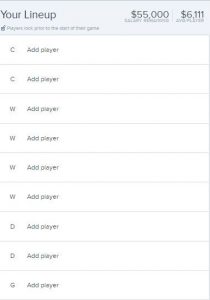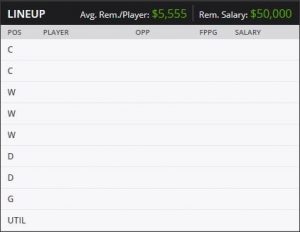To get you set for the upcoming season, we have provided a list of a few of the most heated rivalries in the NHL. In these games, you will see more action, harder hits and more spectacular acts from both players and goalies. We at Win Daily recommend watching any games between these teams during the regular season.
DFS Correlation: Heated rivalries can easily be exploited for DFS purposes, but they shouldn’t be your only source to choose one play over another. However, when looking at the effects narrative have on a player’s performance, playing against a big rival can increase a team’s overall output. Generally speaking, players often subconsciously try much harder against teams that they have rivalries with and point totals end up being much higher for both teams. For example, within the Battle of Ontario (Toronto vs. Ottawa) the Ottawa Senators averaged 4.75 goals per game whereas throughout the regular season in 2018-19 the Senators scored 2.95 goals per game. Frederik Andersen held a 2.77 GAA against all teams in 2018-19 but against Ottawa, Andersen had a 4.00 GAA.
- Toronto Maple Leafs vs Montreal Canadiens
This rivalry is as old as the league itself. It features the first two of the NHL’s original six teams and unsurprisingly the two most successful NHL teams with Montreal carrying a total of 24 Stanley Cups and Toronto carrying a total of 13 Stanley Cups. Many fans see the meetings between the two teams as emblematic of the rivalry between Anglo-Canadians and Franco-Canadians throughout Canadian history. This culture war has stemmed since the French defeat in the Seven Years’ War, where they seceded most of Canada to the British, excluding Quebec, which led to Quebec retaining much of the previously held French culture. The rivalry was at its height in the 1960s when Toronto won four Cups and Montreal won five within the 10-year span. Montreal currently holds the lead between the two teams at 398 wins and 318 losses. Here is a short video on the history of the rivalry.
Regular Season Meetings: Oct 5 @ TOR, Oct 26 @ MTL, Feb 8 @ MTL, Apr @ TOR - Pittsburgh Penguins vs Philadelphia Flyers
The Battle of Pennsylvania began when both teams were introduced into the league as expansion teams at the beginning of the 1967 season. The hotly contested rivalry has pitted both fans and coaches against each other as it is widely considered their most anticipated matchup of the season. When these two teams match up you are bound to see players finishing their checks and more often than not getting into some brawls, such as the ones included here. The other draw between these two rivals is that they play in the same division which has led to important playoff meetings where most notably in 2012 the Flyers eliminated a heavily favored Penguins side en route to the Eastern Conference semi-finals. This rivalry has featured greats such as the Broad Street Bullies, Mario Lemieux and Sidney Crosby among others. The rivalry between these cities has also branched out into other sports manifesting between the Phillies and Pirates (MLB) and between the Eagles and Steelers (NFL).
Regular Season Meetings: Oct 29 @ PIT, Jan 21 @ PHI, Jan 31 @ PIT, Mar 29 @ PHI - New York Rangers vs New York Islanders
The Final rivalry is between the New York franchises. Known as the battle of New York. It features the Rangers, who reside in the Manhattan borough of New York City and the Islanders who primarily reside in Brooklyn. The Isles have had more postseason success overall between the two teams and as of late the Islanders have gotten the better of the Rangers by taking 13 of their last 16 meetings. Despite having big names such as Mark Messier, Wayne Gretzky, John Tavares and Pat LaFontaine (LaFontaine playing for both the Rangers and Islanders) involved in the past, there could be a rejuvenated rivalry as the Rangers bulked up over the offseason adding Kakko, Panarin and Trouba. The NHL has also produced a short video discussing the rivalry, so check it out here!
Regular Season Meetings: Jan 13 @ NYR, Jan 16 @ NYI, Jan 21 @ NYR, Feb 25 @ NYI








